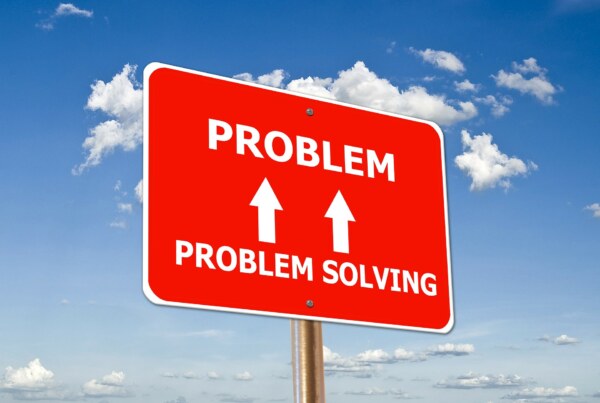“All changes, even positive ones, are scary. Attempts to reach goals through radical or revolutionary means often fail because they heighten fear. But the small steps of Kaizen disarm the brain’s fear response, stimulating rational thought and creative play.”
Dr. Robert Maurer, One Small Step can change your life: the Kaizen Way
The word Kaizen is derived from the two Japanese words “Kai” (change) and “Zen” (good). Kaizen loosely translates to “change for good” and is the concept for continuous improvement. Kaizen encapsulates improvement every day, week, month and year which results in big changes over time. It is therefore the development of an organisation culture or mindset in which every individual is focused on continuous improvement. The goal of Kaizen is to become “lean” – for more information on lean, check out our blog on lean for supply chain:
History
The prominence of Kaizen techniques arose after World War II where the Japanese leaders were tasked with rebuilding their economy. They were faced with a daunting task as they lacked resources and time with the welfare of the nation resting on their shoulders. They turned to scholars to assist them with one of them being Dr W.Edward Deming. Dr Deming was an engineer and statistician by profession who believed in the use of statistical techniques to control a processes or production. Under Dr Deming’s tutelage the Japanese leaders developed management training systems with special attention paid to statistical process control and continuous reduction or removal of inefficiencies. Widespread implementation of Kaizen in Japan and other countries has yielded huge successes over the years. Achieving these results was not only driven by an array of tools, techniques and methodologies but also by a mindset shift.
Types of Kaizen
Kaizen is part of lean principles which aim to remove waste to become more efficient with time and resources. There are two different Kaizen approach, each with their own pros and cons:
Process / Point Kaizen – immediate actions are taken to correct defects quickly without comprehensive planning. These actions are usually small, localized and quick to implement. One issue to note is that process Kaizen may have negative effects without proper impact analysis.
Flow / System Kaizen – happens at management level to view the entire organization and address local and systematic problems. Proper planning is paramount to successful flow Kaizen and its effects are generally observed quickly.
Note that these approaches are based on the type and nature of the problem. One of the common mistakes made is the use of the incorrect tool or methodology will result in the root cause not being identified and failure. Individuals than assume that this is a “waste of time” and the kaizen thinking or journey is aborted. Getting the correct practitioner to support you in your journey is crucial.
Implementation of Kaizen
Kaizen is progressively contributing to an accrued effect. Some of the strategies that are available to management to identify and eliminate the waste of time and resources:
- Value Stream Mapping (VSM)
- 5 Why analysis
- Fishbone diagrams (Cause & Effect)
- FFA (Formal Failure Analysis)
- FMEA (Failure Modes and Effects Analysis)
- QCT (Quick Changeover Technology) or SMED (Single Minute Exchange of Dies)
- Choosing a process or whole production line to optimize
- Implementing “5S” workplace organization methods (Sort, Straighten, Shine, Standardize and Sustain)
- Looking for the 7 types of waste (Muda)
- Overproduction or Underproduction
- Waiting time
- Transportation
- Over processing
- Excess inventory
- Motion
- Defective products
- Develop a process of improvement
- Analytics – Measuring the results
- Lean Six Sigma
Each of these Kaizen methods are complex and will be expanded upon in future blog articles.
Example of Kaizen in Business
In Formula 1 (F1), the goal of a pit stop is to change the vehicle’s tyres and replace parts (if needed) as quickly and safely as possible. In the past, five mechanics were tasked to change tyres and fill fuel. Sometimes, mistakes were made and the car would depart without the tyres being attached correctly, or the fuelling hose would still be attached (modern F1 does not re-fuel).

With the application of Kaizen, the teams figured out that the role of the pit crew mechanic that replaces the types should be split into three roles: one to remove the tyre nut, one to replace the tyre and one to oversee the process. This splitting of roles made the process quicker and safer
Other systems were implemented to aid the driver. Instead of the driver watching each wheel to see when all four wheels were changed, the teams installed lights above the pit box which would only turn green when the pit crew gave the all clear indication via a remote control
Kaizen improved pit stops from a few minutes all the way down to sub 2 seconds.
In your factory changing over from one product to the other results in lost capacity. Applying the principles of QCT or SMED can drastically reduce your downtime. In a recent project, we reduced the changeover time for a multinational FMCG (Fast Moving Consumer Goods) from 161 minutes to 70 minutes, resulting in a weekly saving of over 10 hours.
Example of Kaizen helping in Everyday Life
“Without continual growth and progress, such words as improvement, achievement, and success have no meaning”
Benjamin Franklin
Kaizen concepts hold true in everyday life: continuous improvement every day add up to huge changes over time. Break down bigger tasks into smaller more manageable chunks. For example, if you are looking for a job:
- Draft a personalized CV
- Polish your Linkedin profile
- Clean up your social media
- Research companies for interviews
Each individual task can be broken down further. Remember to make each task small and achievable so that these small victories now lead to your success in the future.
Closing thoughts
It is interesting to note that Japanese industries were completely decimated at the end of World War II, however the use of supply chain optimization principles – including Kaizen – grew Japan from the ground up and currently they have the third largest gross domestic product in the world. I hope that this article has brought attention to a powerful way of thinking together with its tools, techniques and methodologies which can form part of your arsenal in business and in life. Apply Kaizen to your business to yield great improvements. If you need assistance in optimizing your business (Saving money), Nikshen Consulting is here to help.
Author
Kubeshan Govender is the co-director of Fulcrum Venture Capital, an attorney and ever aspiring entrepreneur. Under the mentorship of Dr. Kenneth Moodley (director of Nikshen Consulting), Kubeshan’s views and knowledge on business and entrepreneurship have expanded to meet the ever-present opportunities out in the world.



![Kaizen – the power of continuous improvement [Kubeshan Govender]](https://nikshen.com/wp-content/uploads/2021/03/Kaizen_StepbyStep.jpg)


